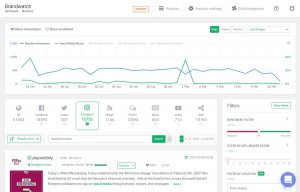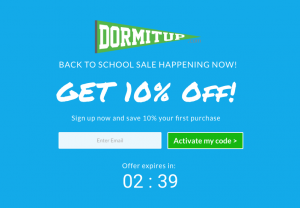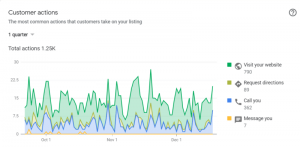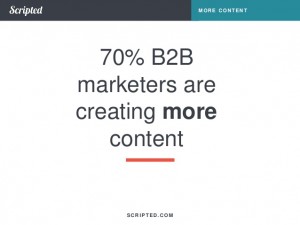— September 26, 2018
Right now, there is a tsunami that’s coming to wipe out thousands of SaaS companies.
In this article, I’ll walk you through the three tidal waves coming ashore and show you how to avoid their potentially disastrous consequences.
The Three Tidal Waves Coming for Your SaaS Business
Tidal Wave 1: Buyers now prefer to self-educate.
This isn’t limited to the B2C space. Three out of every four B2B buyers would rather self-educate than learn about a product from a sales representative, according to Forrester.
Let me ask you two questions:
- Would you like to see and use a software product before buying it?
- Or would you prefer to go through a lengthy sales process to see if it’s a good fit?
If you’re like most people, you’ll opt for trying out the product on your own. This doesn’t apply just to small and mid-size businesses. As Aptrinsic notes, “Enterprise buyers also expect to try and evaluate software in an easy, frictionless way.”
Trying out a product through a free trial or freemium model is less hassle and can help you decide quickly on a product. Do you agree?
Tidal Wave 2: Startups are more expensive to grow.
In one sense, this is counterintuitive: It has never been cheaper to build a SaaS company. (HackerNoon even goes so far as to claim that you can now build a SaaS product with $ 0.)
However, because of this low barrier to entry, there’s no shortage of competition. As a result, argues Andrew Chen, it’s becoming more expensive to acquire customers. Just take a look at these three channels:
- Facebook: 171% Increase in Cost per Thousand Impressions, or CPM (2017)
- Twitter: 20% Increase in CPM (Q4 2017)
- LinkedIn: 44% Increase in CPM (Q2 2017)
There are other channels, of course, but these numbers give us a hint that, well, marketing isn’t getting any cheaper. According to ProfitWell, customer acquisition costs (CAC) have increased by over 55% in the last 5 years:
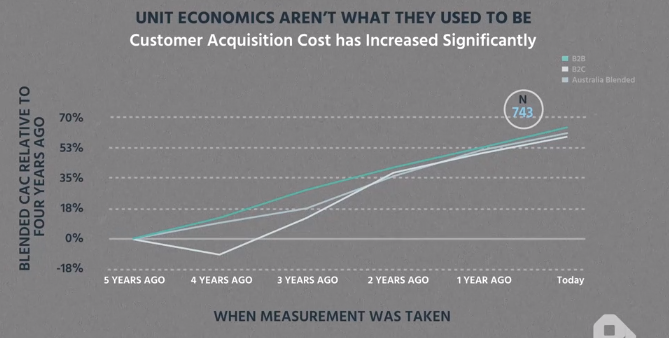
At the same time, customer willingness to pay for features has dropped by 30% during that same period:
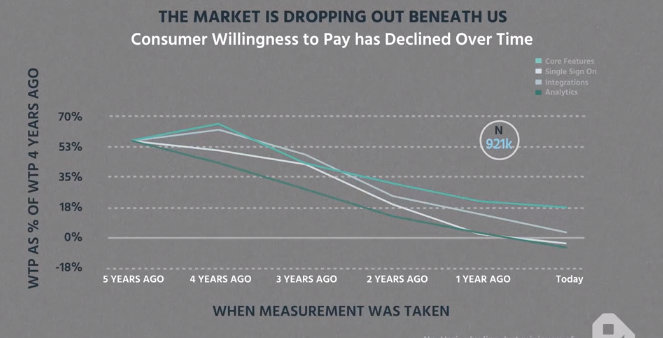
So, on one hand, we have rising costs; on the other, we have a lower willingness to pay. You don’t have to be a financial whiz to understand that this means your expenses go up while your profitability goes down.
If you have high churn in your SaaS business, this tidal wave may be lethal. Wouldn’t you agree?
Tidal Wave 3: Product experiences have become an essential part of the buying process.
If you’ve used Slack or Dropbox, you’ve witnessed this first-hand—you didn’t read a lengthy white paper on the benefits of strong internal communication or cloud-based file sharing. You wanted to see the damn product in action!
Wouldn’t you agree?
If you’ve been agreeing with everything that I’ve said so far, you’ll also agree that these tidal waves aren’t stopping anytime soon. They’re here to stay. Consumers (like us) demand it.
Now, your SaaS platform might be able to weather one of these tidal waves, but do you really want to take a chance on surviving all three?
To put your SaaS in the best position to win, you need to pick a go-to-market strategy that will place your SaaS on high ground.

Put Your SaaS Go-to-Market Strategy on High Ground
First off, what is a go-to-market strategy? A go-to-market (GtM) strategy is an action plan that specifies how a company will reach target customers and achieve a competitive advantage.
Before we dive into which SaaS GtM strategies might work best for your business, you need to take four elements into account:
- Battle environment (i.e. market conditions) and competitive positioning
- Target or enemy (i.e. ideal customer)
- Weapon of choice (i.e. product offering and pricing)
- Tactical plan (i.e. customer acquisition process and channels)
Knowing each of these elements will help you choose a GtM strategy that will acquire, retain, and grow your customers in the most capital-efficient way.
Other strategies, in contrast, are ripe for disruption and put you at risk.
Is your SaaS Go-To-Market Strategy at Risk?
Two classic SaaS GtM strategies are at risk of being disrupted: the sales-led and marketing-led GtM strategies.
1. The sales-led GtM strategy
| Tidal Waves | Safety Zone |
| Tidal Wave 1 – Self-Educate |  |
| Tidal Wave 2 – Rising Acquisition Costs |  |
| Tidal Wave 3 – Product Experience |  |
What is a sales-led go-to-market strategy?
A sales-led go-to-market strategy is a growth engine that leverages a sales team to reach their target customers. Essentially, if you want to make a sale, the whole process starts and ends with your sales team.
- Pros: Ability to close high Lifetime Value (LTV) customers. Perfect for hyper-niche solutions.
- Cons: Expensive customer acquisition cost (CAC) and hard to scale.
A big downside of the high-touch sales model is that the CAC is out of control, and the sales cycles are extremely long. As you can see in the graph below, high-touch sales is a leading indicator of CAC.
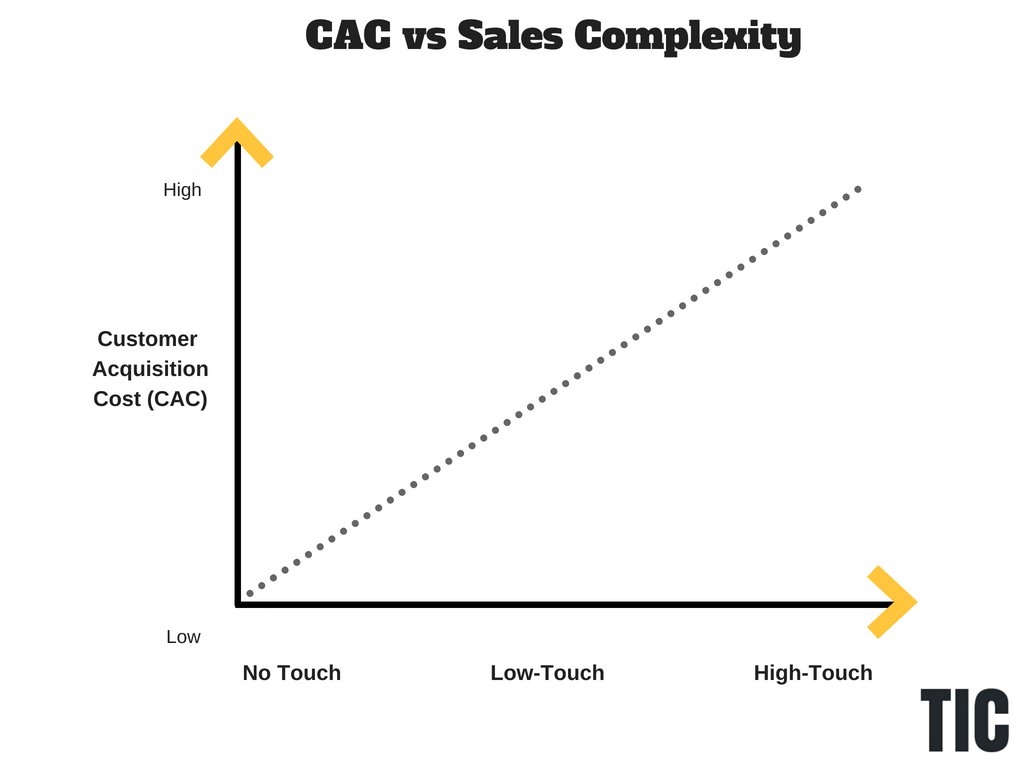
A high-touch sales process can balloon customer acquisition costs. (Image source)
To make sure the high-touch sales model remains profitable, the LTV naturally has to be high enough to recoup the cost of acquiring each new customer.
To reach that LTV, most sales-led businesses have to charge their customers a hefty premium. That premium price isn’t because the solution is more valuable but because the customer acquisition model is more expensive.
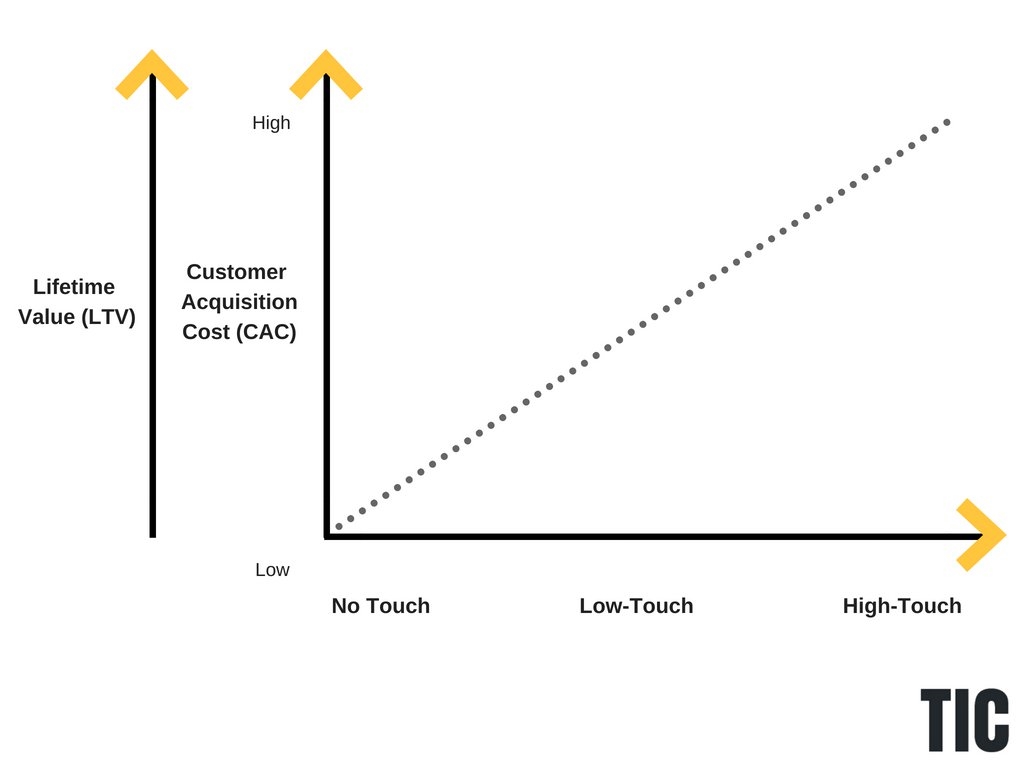
A sales-led strategy passes costs to consumers that have no connection to product value. (Image source)
If you currently use a sales-led GtM, a competitor with a more efficient customer acquisition model can deliver a more affordable price tag and steal your market share. To put yourself on higher ground, the next best SaaS GtM is a marketing-led GtM.
2. The marketing-led GtM strategy
| Tidal Waves | Safety Zone |
| Tidal Wave 1 – Self-Educate |  |
| Tidal Wave 2 – Rising Acquisition Costs |  |
| Tidal Wave 3 – Product Experience |  |
What is a marketing-led go-to-market strategy? A marketing-led go-to-market strategy is a growth engine that leverages a marketing team as a key lever to drive demand for a product.
The marketing team is responsible for driving Marketing Qualified Leads (MQLs) while the sales team works to further qualify these leads as Sales Qualified Leads (SQLs).
- Pros: Lower CAC than a sales-led GtM strategy.
- Cons: 98% of marketing qualified leads don’t result in sales.
Marketing-led GtM is much more efficient than the traditional sales-led GtM; however, when it comes to customer acquisition, it has a big leak. According to SiriusDecisions, 98% of marketing-qualified leads never result in closed business.
One of the reasons this conversion rate is famously awful is that the MQL model has hidden flaws:
- It encourages marketers to gate content to hit their MQL goals.
- It focuses on content consumption as a leading indicator of intent.
- The entire process rewards creating friction in the buying process.
As a result, there is often a disconnect between marketing and sales. Should we really be surprised though? Does downloading a whitepaper mean you’re ready to buy?
Absolutely not.
That said, the marketing-led GtM strategy isn’t the worst option, but there’s still lots of room for improvement. If you want to create a SaaS business that can weather a tsunami, you may want to consider adopting a product-led go-to-market strategy.
Why SaaS businesses are adopting product-led go-to-market strategies
The future of growth belongs to product-driven companies. At HubSpot, we realized this a few years ago, which is why we disrupted our own business model before anyone else could. – Kieran Flanagan, HubSpot
Over the last five years, countless SaaS businesses have switched from a traditional sales or marketing-led GtM strategy to a product-led GtM strategy.
These are just a few great stories of notable companies that have made the switch.
- HubSpot, VP of Marketing Kieran Flanagan
- DataMiner, CMO Tom Wentworth
- TradeGecko, Product Manager Lucas Neo
What is a product-led go-to-market strategy? A product-led go-to-market strategy relies on product features and usage as the primary drivers of customer acquisition, retention, and expansion.
| Tidal Waves | Safety Zone |
| Tidal Wave 1 – Self-Educate |  |
| Tidal Wave 2 – Rising Acquisition Costs |  |
| Tidal Wave 3 – Product Experience |  |
This is the strategy that many well-known SaaS companies have adopted successfully, including Grammarly, Slack, and Dropbox.
Gokul Rajaram of Square, another example, summarizes the rationale: “Truly great software businesses are self-service first.”
- Pros: A significantly lower CAC, wider top of funnel, and rapid global scale. Works great with a large total addressable market.
- Cons: Hard to implement correctly.
Product-led SaaS businesses have an unfair advantage and enjoy access to a dominant growth engine and significantly lower CAC.
Dominant growth engine
Free software gives you the option to scale faster than your competitors in two powerful ways:
- Wider top of funnel: A free trial or freemium model opens up your funnel to people who are earlier on in their customer journey. This is powerful because—instead of prospects filling out your competitor’s demo requests—they’re evaluating your product.
- Rapid global scale: While your competitors are busy hiring new sales reps for each region under the sun, you can focus on improving your onboarding so that you can service more customers around the world in a fraction of the time.
A significantly lower CAC
Free software also builds a moat around your business in three ways:
- Fast sales cycles: By having your prospects onboard themselves in your product, you can significantly reduce your prospect’s time-to-value and sales cycle. Once people experience value in your product, the next logical thing to do is upgrade. The quicker your users can accomplish a key outcome in your product, the quicker you can convert your free trial users into paying customers.
- High revenue-per-employee (RPE): Software was always built to scale well, but with a self-service approach, you’re able to do more with fewer people on your team. Less hand-holding means higher profit margins per customer.
- Better user experience: Since your product is built for people to onboard themselves, the overall support requests are often minimized while the user experience benefits.
As you can see, using a product-led GtM strategy gives you an unfair advantage in your market. But it doesn’t stop there.
According to OpenView Ventures, product-led SaaS businesses are valued more than 30% higher than the public-market SaaS Index Fund.
Conclusion
This is not for everyone. One thing I hope you’re not inferring from this article is that you need to be a self-service business. If you don’t know what you’re doing, adopting a product-led GtM strategy might kill your business instead of helping it.
Many ambitious entrepreneurs have tried and failed. Rob Walling, the CEO of Drip, offers a warning: “Freemium is like a Samurai sword: unless you’re a master at using it, you can cut your arm off.”
Part of the reason many SaaS businesses fail at transitioning from a traditional GtM strategy to a product-led one is that there’s no battle-tested playbook. You need to figure out whether a free trial or freemium model will work for your business.
To help make this process easier, I recently worked with the brilliant CXL team to create an entire course on product-led SaaS growth. The course can help you:
- Put together a successful product-led growth strategy that will get quick wins under your belt before the course is even finished.
- Avoid painful bottlenecks when it comes to acquiring and activating free-trial and freemium users.
- Help more people experience the core value of your product and (actually) want to upgrade.
Now, I’m curious. Is your SaaS go-to-market strategy tsunami-proof?
Business & Finance Articles on Business 2 Community
(92)
Report Post
